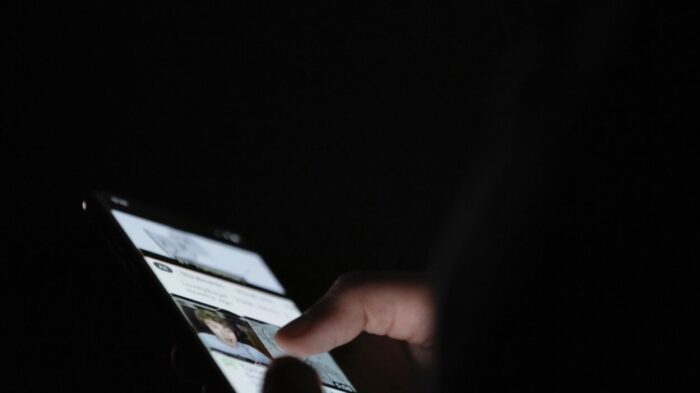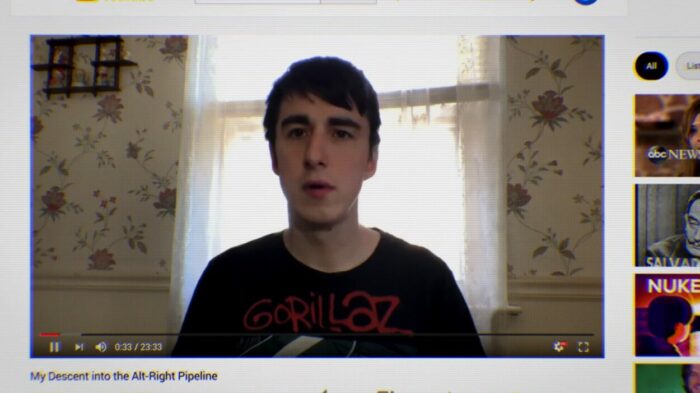When YouTube first appeared in 2005, it was a bit like the Wild West. Home videos were uploaded and random individuals from across the world would go, as we now say, viral. There was novelty in the simplicity of “Charlie Bit My Finger,” a short clip of two young boys sitting on a chair. The older brother, Harry, has his finger in Charlie’s mouth. Charlie, as one-year-olds are known to do, bites Harry’s finger. It’s the sort of clip that’s funny, sweet, and only important to the immediate family. Yet “Charlie Bit My Finger” is one of the foundational pillars of the success of YouTube. From its posting in 2007 to when the video was sold as an NFT for over $700,000 in 2021, the 56-second clip garnered over 878 million views. In 2011, the family reported £100,000 in revenue from advertisements. “Charlie Bit My Finger” is just the tip of the iceberg of YouTube’s cultural impact, and The YouTube Effect chronicles how it shifted from clips like “Charlie” to the powerhouse site it is today.
As with most projects, the root of the idea came from a desire to better the world. YouTube co-founders Steve Chen, Chad Hurley, and Jawed Karim wanted to make sharing videos more accessible. At least that’s the official version. Depending on who you ask, YouTube was dreamt up because the co-founders wanted to share videos from a dinner party they’d attended, rewatch the infamous Super Bowl XXXVIII halftime show, see footage of the 2004 Indian Ocean tsunami, or create a video version of the popular hot-or-not websites. Only two of those reasons are arguably for the betterment of humanity, which is perhaps why YouTube has turned into the monster it is now.

The YouTube Effect premiered at the 2022 Tribeca Festival, but its widespread release coincides with an apology video from a famous YouTuber in which she responds to allegations that she exploited minors. That YouTuber is briefly featured in the film. While The YouTube Effect obviously doesn’t feature anything about this particular incident, the documentary does look at the idea of YouTuber culture and the unregulated nature of this newly created career path. Because of the algorithms and the monetization aspect, YouTube seemingly rewards videos that are clicked on and watched. What that tells an aspiring YouTuber is that they need to get people to watch and keep watching by any means necessary. It’s a dangerous mindset when YouTube seems like the answer to freeing oneself from the corporate world of nine to five. The result is prank videos that end in people being hurt, or the famous travel video in which Logan Paul filmed a dead person.
The success of YouTube hinges on how long browsers can be enticed to stay on the website. One way that’s done is through “Watch Next” and recommended videos. On paper, that’s a nice concept. Recommendations are how people find new movies, books, or other media based on something they already know they like. However, the insidious aspect of YouTube’s algorithm is that someone browsing videos about the 1969 moon landing will soon find themselves in a world of conspiracy theories.

Caleb Cain, a YouTube creator featured in The YouTube Effect, explains how he fell down the alt-right rabbit hole. He was depressed and started watching self-help content that began to turn into more extremist beliefs. He explains that the self-help videos were an on-ramp, a validation of the loneliness and anger he was feeling. It lulled him into buying into much more dangerous beliefs. Cain latched onto the far-right creators because they gave him a checklist to follow that gave him guidance when he needed it most. He ended up losing empathy for people who don’t look like him.
The YouTube Effect is a harrowing documentary about the repercussions of the video-sharing behemoth. The documentary questions the role of YouTube in terms of First Amendment rights, its encouragement of harmful parasocial relationships, and its responsibility in the spread of misinformation. Perhaps the most damning aspect of the documentary is the PR talking points spouted by then-current YouTube CEO Susan Wojcicki, which were in direct contrast with the reality of people’s experiences when using the site. If anything, The YouTube Effect feels like the beginning of what could be a very long series about the impact of YouTube on society as a whole. It is by no means all-inclusive, but such a feat would be impossible because of the fundamental way YouTube has changed our understanding of the world around us.
The YouTube Effect ends with a voiceover from Jillian C. York. She’s an author and a free-speech activist. Her final sentiment is that YouTube as a website is a litmus test. Depending on your worldview, you can either view YouTube as a place to condemn differences and other people’s lives or you can see it as a place to learn about other cultures. That’s an oversimplification, because it minimizes the real effects of people losing their empathy offline, but the unity that can exist on YouTube shouldn’t be ignored either. It’s a matter of trusting the big tech companies to do the right thing when it comes to protecting their users. What will the lasting effect of a site like YouTube be? Only time will tell.




